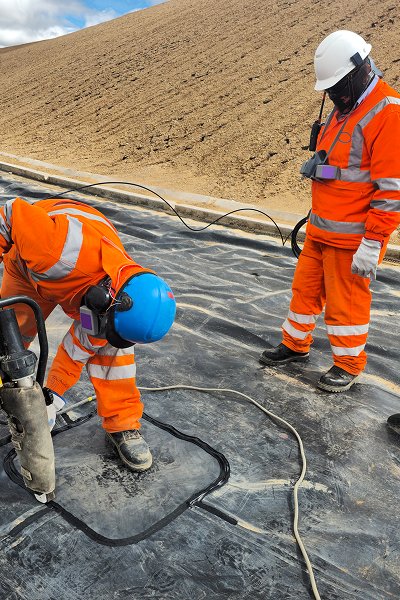What is Geogrid Mesh?
Geogrid Mesh is a mesh material made of high-strength polymers such as polypropylene (PP), polyester (PET) or high-density polyethylene (HDPE), mainly used for soil reinforcement, stratification, isolation and other functions. According to its stretching direction and structure

Five major applications in highway construction
1.Soft foundation reinforcement and bearing capacity improvement
When building roads in soft soil areas such as swamps, tidal flats, and wetlands, the foundation is very likely to settle, deform, or even become unstable.
The role of Geogrid
Disperse wheel load pressure and reduce concentrated stress;
Provide a "tension" support structure to limit the lateral movement of the soil;
Work together with the gravel cushion to form a composite reinforcement layer.
2.Base reinforcement to prevent mud and deformation of the roadbed
In the early stage of highway use, "mud" and "sinking" are often caused by groundwater upwelling or insufficient load, especially in the spring thaw zone.
Geogrid solution
Through high-strength tensile force, the integrity of the roadbed is enhanced;
The mesh structure locks the gravel particles and inhibits movement;
Reduce the shear deformation rate of the soil and improve long-term stability.
3.Embankment slope stability and anti-slide design
High embankments and waterside slopes are prone to landslides due to gravity or soil erosion.
Geogrid working principle
Provide lateral constraints;
Enhance the shear strength of the slope soil;
Effectively disperse the thrust of the slope surface and improve the overall stability.
4.Asphalt pavement anti-reflective cracking
Old road renovation and new pavement with semi-rigid base often cause "reflective cracks" in the asphalt surface layer due to temperature changes and base cracking.
Geogrid suppression mechanism
Forming a "crack stress absorption zone" under the surface layer;
Disperse stress concentration points and delay crack expansion;
Improve the tensile strength of the surface layer and delay fatigue aging.
5.Slope surface protection and greening support
The slopes on both sides of mountain highways or tunnel entrances are easily damaged by rainwater erosion, requiring structural reinforcement and ecological restoration.
Advantages of geogrids
It can be used as a skeleton support for vegetation soil;
Fix plant roots to prevent erosion;
Used in conjunction with spray greening and soil nail walls, it takes into account both structure and aesthetics.




Geogrid Mesh Selection Recommendations
| Application Scenario | Recommended Geogrid Type | Suggested Tensile Strength |
|---|---|---|
| Soft subgrade reinforcement | Biaxial polyester (PET) geogrid | ≥ 40 kN/m |
| Asphalt pavement crack prevention | Fiberglass geogrid | ≥ 50 kN/m |
| Embankment slope stability | Uniaxial high-strength geogrid | ≥ 60 kN/m |
| Subgrade anti-pumping and rutting | Biaxial polypropylene (PP) geogrid | ≥ 30 kN/m |
| Surface slope protection & greening | HDPE 3D geogrid | / |


